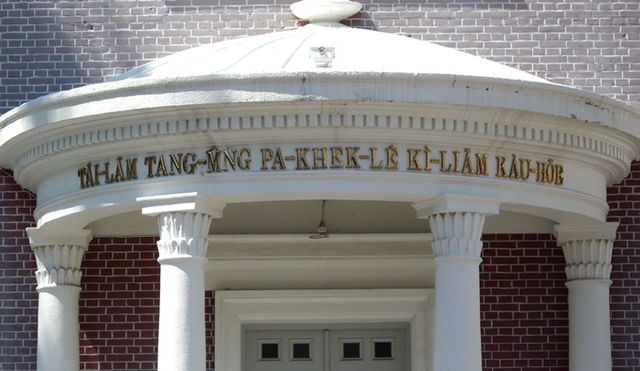Taiwanese Hokkien, or simply Taiwanese, also known as Taiuanoe, Taigi, Taigu, Taiwanese Minnan, Hoklo and Holo, is a variety of the Hokkien language spoken natively by more than 70 percent of the population of Taiwan. It is spoken by a significant portion of those Taiwanese people who are descended from Hoklo immigrants of southern Fujian. It is one of the national languages of Taiwan.
A selection of literary works (original and translated) in Taiwanese, in several orthographies.
An issue of the Taiwan Church News, first published by Presbyterian missionaries in 1885. This was the first printed newspaper in Taiwan, and was written in Taiwanese, in the Latin orthography Pe̍h-ōe-jī.
Japanese–Taiwanese Dictionary, using the orthography in kana
Pe̍h-ōe-jī inscription at a church in Tâi-lâm commemorating Thomas Barclay.
Pe̍h-ōe-jī, sometimes known as Church Romanization, is an orthography used to write variants of Hokkien Southern Min, particularly Taiwanese and Amoy Hokkien, and it is widely employed as one of the writing systems for Southern Min. During its peak, it had hundreds of thousands of readers.
Pe̍h-ōe-jī inscription at a church in Tainan (Tâi-lâm) commemorating Thomas Barclay
A sign over a chicken rice restaurant in Sanchong, Taiwan, reading "Ke Bah Png" with no diacritics or hyphens; the correct POJ version would be "ke-bah-pn̄g", or "koe-bah-pn̄g" in the local pronunciation
Some books which use pe̍h-ōe-jī, including textbooks, dictionaries, a bible, poetry, and academic works






